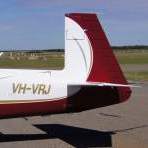Two gear up landings within 2 days of each other - M20C at KFNL & M20M at KPAE.
-
Members Online
- takair
- TCC
- christaylor302
- MarquezJC
- lithium366
- Greg Ellis
- RescueMunchkin
- Jerry 5TJ
- MDMooney
- Ethan
- phxcobraz
- joemoriss
- 1980Mooney
- varlajo
- Shrobby
- KLRDMD
- alexz
- CL605
- TangoTango
- Will1143
- redbaron1982
- bigmo
- Jetdriver
- hammdo
- BillyT0020
- MB65E
- AndreiC
- ttflyer
- natdm
- Stealth Mooney
- mmcdaniel33
- philiplane
- Jim Peace
- Marc_B


Recommended Posts
Join the conversation
You can post now and register later. If you have an account, sign in now to post with your account.